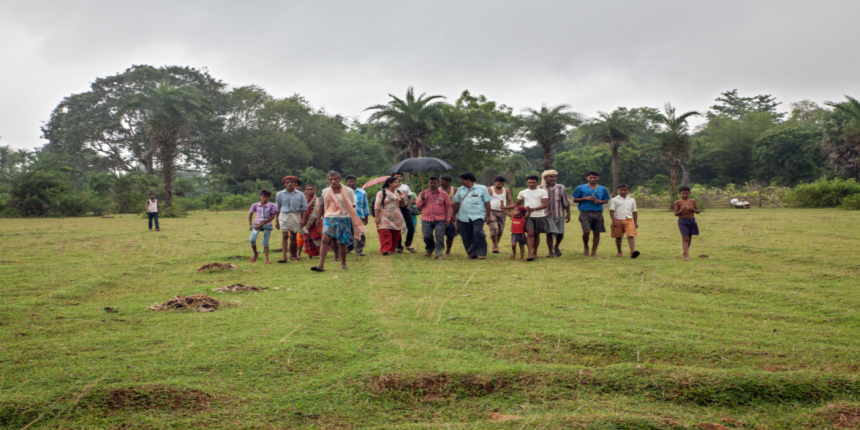IRDP Full Form
What is the full form of IRDP?
The full form of IRDP is the Integrated Rural Development Program. The Integrated Rural Development Program, or IRDP, was initially introduced and developed by the Indian government in 1978. It was then put into action two years later, in the year 1980. The Integrated Rural Development Program, or IRDP, was established to raise many people's standards of living by giving the unemployed and underemployed in rural areas access to employment opportunities and the appropriate financial assistance.
- What is the full form of IRDP?
- Key facts about IRDP
- Objective of IRDP
- Important Strategies of IRDP
- Integrated Rural Development Program Recipients
- Subsidies offered through the IRDP

In 1978–1979, the Janta government combined the Community Area Development Programme (CADP), Drought Prone Area Programme (DPAP), Small Farmer Development Agency (SFDA), and Marginal Farmers and Agricultural Labourers Agency (MFALA) to establish the Integrated Rural Development Programme (IRDP).
Key facts about IRDP
A few of the IRDP program's standout characteristics are listed below.
As a centrally sponsored initiative supported equally by the federal and state governments, the program is implemented throughout the entire nation.
The 8th Five-Year Plan's definition of the poverty line, which is the group of persons whose yearly income is less than 11,000 rupees, is the target audience for the IRDP.
At least 50% of the families receiving assistance under this program must be from scheduled castes(SC) and scheduled tribes(ST), according to the program.
A further 40% of beneficiaries are women, and 3% are people with physical disabilities.
Objective of IRDP
As was already said, the purpose of the IRDP is to improve the standard of living in underdeveloped rural areas so that it is above the poverty level. The following is a list of the Rural Development Program's primary goals:
To raise the level of living for families who are below the poverty line.
To empower the underprivileged by assisting them in acquiring basic skills.
This initiative helps rural craftsmen, small and marginal farmers, and agricultural labourers who are living in poverty by providing them with productive assets and knowledge support.
The program's resources may be found in the primary, secondary, or tertiary sectors.
These people receive financial support from IRDP in the form of loans from various cooperatives, commercial banks, and local rural banks in addition to government subsidies.
By providing this population with productive resources from the primary, secondary, and tertiary sectors, these objectives are achieved. These people get financial assistance from different financial institutions in the form of IRDP loans and credits or government subsidiaries.
Important Strategies of IRDP
To provide required input for an increase in the agriculture sector.
To reduce unemployment.
To increase the food supply.
To enhance people's living standards.
Integrated Rural Development Program Recipients
The recipients of IRDP are: -
rural artists
ladies who lack resources
Labourers
persons with varying abilities
Farmers on the edge
Tribes and Castes that are scheduled.
Those with annual incomes under Rs 11,000 who are considered to be economically low-income
Subsidies offered through the IRDP
Following are the groups of people who receive subsidies:
-Small farmers(25%)
-Farmworkers and subsistence farmers (33.33%)
-Families of SC/ST individuals and those with disabilities (50%)
For SC/ST families and individuals with disabilities, the maximum subsidy amount has been set at Rs. 6,000; for non-DPAP and non-DDP (Desert Development Programme) locations, it is Rs. 4,000; and for DPAP and DDP localities, it is Rs. 5,000.
Women, individuals with disabilities, and SC/ST candidates from this group are all granted subsidies of 50%, 40%, and 3%, respectively. First preference is also given to members of this group who have been allocated the maximum amount of excess land, as well as to Green Card holders who qualify for family welfare programs and free bonded labour.
Other Related Full Forms -
Frequently Asked Questions (FAQs)
The Janta administration introduced IRDP in India.
In the 6th five-year plan it was implemented
IRDP initiatives frequently demanded too much of weak institutions and left little to no capacity building since they were overly complicated, had various components and executing agencies, and entered multiple sectors at once.
Block-level organisations and District Rural Development Agencies (DRDA) oversee the carrying out of the IRDP.
Local MPs(Member of Parliament), MLAs(members of the Legislative Assembly), the chairman of the Zila Parishad, women, representatives of reserved castes and tribes, and heads of district development departments make up the governing body of DRDAs.